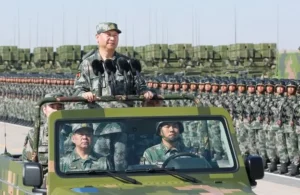Less than ten years after its establishment, China’s Strategic Support Force, once heralded as a beacon of modern military strategy under President Xi Jinping, has been disbanded.
However, Katsuji Nakazawa reports in the Nikkei Asia outlet that a recent series of military reforms dissolved this force, marking a significant shift in China’s military organization.
The dissolution of the Strategic Support Force reflects President Xi’s broader strategy to consolidate power and ensure the military’s unwavering loyalty.

However, this move aligns with Xi’s history of political maneuvers, notably his anti-corruption campaign, which targeted high-ranking military officials.
By restructuring the military, Xi aims to align the armed forces more closely with his vision and control, reinforcing his authority within the party and the military apparatus.
The arrests of former Central Military Commission vice chairmen Xu Caihou and Guo Boxiong for corruption emphasized this strategy.
These events set the stage for major military reforms that bolstered Xi’s control over China’s military strategy.
Strategic Reforms in China’s Military
The Strategic Support Force has now divided into three lower-level units: the Information Support Force, the Aerospace Force, and the Cyberspace Force.
These reforms are dual-purpose. Domestically, they centralize military command under Xi, strengthening his grip on power.
Internationally, these changes are likely intended to refine China’s military capabilities amid increasing global tensions, particularly with the United States.
As another party congress approaches, these military reforms mirror the timing and sequence of past overhauls.
This suggests they may also serve to bolster Xi’s position, potentially paving the way for an extended term in leadership.

